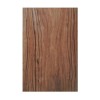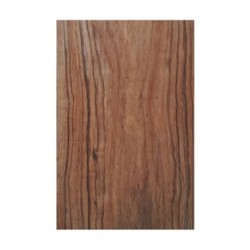Tambootie / Sandalo / African Cocobolo

Family: Euphorbiaceae - Order: Malpighiales - Class: Rosids
Scientific name: (Spirostachys africana)
Trade name: Tamboti / African Cocobolo
Also
known as Sandalo, Mtomboti, Tambotie, Muconite, Sandalo africano and African Sandalwood
Origin:
India, Eastern Africa, North and
East of South Africa.
Instrumental
uses:
Guitar back and sides,
fingerboards, bridges, head plates, peg heads and bindings.
Tonal
properties:
As tonewood, it is a surprising
one. Very powerful and good presence. Very good and defined basses, well
defined midrange and well balanced high frequencies. Voices very clear and
defined along the instrument. Can be matched with any type of top on Classical
acoustic guitars. Used in fingerboards it has great to excellent tonal
properties on fretless basses. Concluding: can be very versatile according to
the set match, bright but perhaps harsh too; a crisp sound attenuator.
The grain is straight but often
wavy with a very fine texture helping very much with the resonance and sustain
overall.
Can
be sometimes difficult to saw due to the high density but it has good
workability, glues and finishes extraordinarily well.
Is
very dense, stiff and very resistant with an
average
dried weight nearly of 60 lbs/ft3 or
955 kg/m3.
It
grows in woodlands, in savanna forests and the coastal belt of the tropical
zone, on poor and acidic soil, where the specie is often dominant.
Is
a medium sized deciduous tree with a straight, clear trunk. The tree reaches a
height of 12 to 15 m. The bole is straight, fluted, up to 6 m in length. The
trunk diameter is 40 to 80 cm.
The
color of the heartwood is mainly golden brown with grayish red brown, with
black marks spread allover the wood. Pale yellow sapwood sharply demarcated
from heartwood. Usually has figured patterns.
CITES status
is unrestricted.
Is not reported on the IUCN Red List.
Gallery Photos




